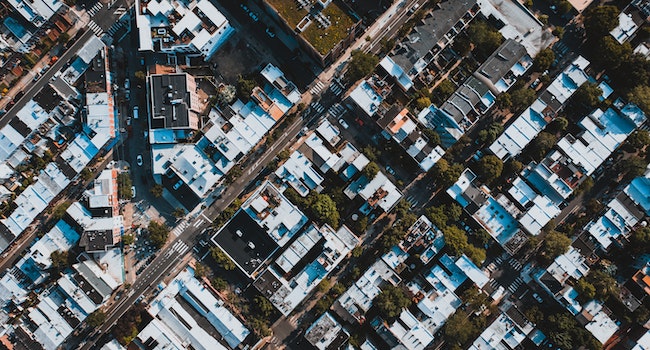How Far Are The Two Blocks?
Determining the distance of blocks can range relying on vicinity and context. For example, in some towns, a block may be as quick as 100 toes, while in others, it can be as much as 900 feet lengthy. It’s also important to bear in mind the size of the block, as urban blocks tend to be smaller than suburban or rural blocks. Nonetheless, a few popular suggestions could assist in estimating the distance between two blocks.
First, it is critical to understand what a block is. In city areas, a block is generally defined as the gap among intersecting streets. It can also be defined as the distance between alleys, an avenue, and a natural barrier, such as a park or river.
To estimate the distance of blocks, you may use the average block period in your vicinity. For instance, in New York City, the common period of a block is about 264 ft, while in San Francisco, it is approximately 400 ft. This method that blocks in New York City might be about 528 feet apart, even as blocks in San Francisco would be approximately 800 ft aside.
Another way to estimate the gap between two blocks is to use Google Maps or a comparable mapping tool. Simply input the starting point and the vacation spot; the tool will provide you with the gap in ft or meters. Keep in thoughts that this method may not be correct if there are barriers or irregularities inside the route, inclusive of hills or detours.
It’s also critical to know that the distance between two blocks can range depending on the course you’re journeying. For example, if you’re on foot north-south in a metropolis grid, the gap between two blocks could be one-of-a-kind than in case you’re on foot east-west. This is due to the fact the period of blocks is usually determined via the distance between the most important thoroughfares, which may be specified in distinct directions.
What Distance Is A Block?
When it involves determining a block’s distance, there’s no trustworthy answer. This is because the duration of a block can vary greatly depending on various factors, consisting of the town or town you’re in, the vicinity’s zoning regulations, and the land’s topography. In this article, we’ll discover a number of the elements which can affect the length of a block and offer a few standard recommendations for estimating a block’s gap.
Factors that Influence the Length of a Block
One of the main elements that can affect a block’s period is the metropolis or town you are in. In some cities, blocks are rather short, with a length of around one hundred to 2 hundred feet. For example, an ordinary town block in New York City is 264 toes long. However, in evaluation, blocks may be much longer in suburban regions or smaller towns, with a period of up to 900 feet or extra. This is because suburban areas generally tend to have extra spread-out improvement, with larger lots and fewer streets, so blocks want to be larger to house this.
Another factor that can affect the length of a block is the vicinity’s zoning guidelines. In a few regions, zoning rules require certain kinds of development to be located within a positive distance of each different. For example, a zoning regulation would possibly require that residential homes be located within a certain distance of a park or industrial district. This can lead to shorter blocks, as buildings are clustered extra tightly together.
The topography of the land can also influence the length of a block. In hilly areas, for example, blocks can be shorter and steeper because it’s extra difficult to build on steep slopes. In flat regions, blocks can be longer and greater rectangular because it’s less complicated to construct in a grid sample.
Estimating the Distance of a Block
While there’s no person-size-fits-all answer to the question of how long a block is, there are a few well-known hints you can use to estimate a block’s distance. One approach is to use the average duration of a block to your vicinity. You can usually locate this information on your neighborhood government’s website or by contacting your town or metropolis’s planning branch.
Another method is to use Google Maps or a similar mapping tool. Simply enter the place to begin, and the destination and the tool will provide you with the gap in feet or meters. This technique can be mainly useful in case you’re seeking to estimate the gap of a block in a city or city you are now not acquainted with.
It’s vital to remember that these techniques are best estimates, and the real duration of a block can range depending on several factors. Additionally, the period of a block can range depending on the route you are visiting. For example, in an ordinary grid sample, the duration of a block running north to south may be more exclusive than the duration of a block jogging east to west. This is because the duration of blocks is usually determined with the aid of the space among predominant thoroughfares, which can be distinct in extraordinary instructions.
What Do Two Blocks Mean?
When someone says ” blocks,” what exactly do they imply? The answer to this query can vary depending on several factors, along with the metropolis or town you are in, the form of neighborhood you are in, and even the man or woman you are talking to. This text will explore what ” blocks” are typically methods in special contexts and provide a few standard pointers for estimating the blocks’ distance.
What “Two Blocks” Typically Means
As well known, when someone says ” blocks,” they regard the space between two intersecting streets. This distance can range depending on several factors, along with the city or town you are in and the sort of community you are in.
For example, the gap between two blocks may be brief in a typical city neighborhood, generally around a hundred to two hundred toes. However, in New York City, a normal town block is about 264 toes lengthy, while in San Francisco, blocks may be as long as 900 feet. In assessment, blocks may be a good deal longer in suburban areas or smaller cities, with a distance of as much as 900 feet or more.
It’s also crucial to remember that the distance among blocks can range depending on the path you’re visiting. For instance, if you’re strolling north-south in a city grid, the distance between two blocks could be more distinctive than if you’re on foot east-west. This is because the duration of blocks is commonly determined by the gap between predominant thoroughfares, which can be different in different instructions.
Estimating the Distance of Two Blocks
While the duration of a block can vary depending on several factors, there are a few general tips you may use to estimate the distance between two blocks. One approach is to apply the common duration of a block in your area. You can normally find these statistics on your nearby government’s internet site or by contacting your city or town’s planning department.
Another technique is to apply Google Maps or a comparable mapping device. Simply enter the place to begin and the vacation spot; the device will offer you the distance in ft or meters. This approach can be especially useful in estimating the distance of blocks in a town or city you are no longer familiar with.
It’s essential to maintain in thought that these techniques are simplest estimates, and the distance between two blocks can range depending on more than a few factors. Additionally, the space between two blocks can vary depending on the path you are journeying, as discussed in advance.
Understanding Different Neighborhoods
To get a higher experience of what ” blocks” manner in distinctive contexts, it is important to recognize the distinct kinds of neighborhoods you would possibly stumble upon.
The gap between two blocks is notably brief in an urban neighborhood, usually around a hundred to 2 hundred ft. This is because city neighborhoods tend to be more densely populated, with smaller lot sizes and more streets. In these neighborhoods, it is now not uncommon for buildings to be positioned near the sidewalk, making it clear to walk from one block to the following.
In a suburban community, the distance among blocks can be much longer, with a distance of up to 900 feet or greater. This is because suburban regions tend to have greater unfold-out development, with larger lots and fewer streets. In these neighborhoods, it’s common for homes to be set back from the road, making it difficult to stroll from one block to the following.
The concept of “blocks” might not follow in a rural area. Development tends to be more unfolded in those areas, and there might not be a clear grid pattern of streets. Instead, people may additionally use landmarks or natural capabilities to present directions.
How Many Blocks Is A Mile?
If you’re looking to estimate the space you want to stroll or drive, it’s useful to recognize what number of blocks in a mile. The solution to this question can vary depending on various factors, including your town or city and the direction you visit. In this text, we’ll explore the number of blocks in a mile in distinct contexts and provide a few well-known hints for estimating the space of a mile.
How Many Blocks Are in a Mile?
The distance of a mile may be one-of-a-kind, depending on the context. As well known, a mile is equal to 5,280 toes or 1,609 meters. However, the number of blocks in a mile can range depending on the town or town you are in and the route you are visiting.
The gap between two blocks may be highly quick in a regular urban community, usually around 100 to 200 feet. For example, in New York City, a standard city block is about 264 ft long, while, in San Francisco, blocks may be as long as 900 ft. Based on these measurements, five to 53 blocks in a mile may exist.
In a suburban area or smaller city, blocks can be much longer, with a distance of as much as 900 ft or more. Based on these measurements, there might be anywhere from five to 18 blocks in a mile.
It’s also critical to remember that the number of blocks in a mile can vary depending on the course you are touring. This is because the length of blocks is generally decided with the aid of the gap among predominant thoroughfares, which may be distinct in exclusive guidelines. For instance, if you’re on foot north-south in a town grid, the gap between two blocks might be more exclusive than in case you’re taking walks east-west.
Estimating the Distance of a Mile
While the wide variety of blocks in a mile can vary depending on a range of factors, you can use a few popular suggestions to estimate the mile gap. One approach is to use Google Maps or a similar mapping tool. Simply input the start line and the destination; the tool will provide you with the distance in feet or meters. This approach can be especially useful if you’re trying to estimate the distance of a mile in a town or metropolis you are no longer acquainted with.
Another method is to apply the common length of a block for your area. You can commonly discover this information on your neighborhood government’s internet site or using contacting your town or city’s making plans branch. Once you have these statistics, you can divide the gap of a mile (five,280 ft, or 1,609 meters) through the average block period for your place to estimate the number of blocks in a mile.
What Does One Block Suggest?
When a person refers to “one block,” they commonly refer to a short phase of an avenue perpendicular to streets bound by this. However, the real distance of a block can vary depending on the town or city you are in. In this text, we will discover what one block normally means in exclusive contexts and provide some recommendations for estimating the space of 1 block.
What Does One Block Mean?
In a standard city neighborhood, a block can be defined as the gap between perpendicular streets. For instance, if you’re walking down an avenue and go to any other street at a right angle, you have just traveled one block. The duration of a block can vary depending on the city or metropolis you’re in. In a few towns, blocks are especially quick, commonly around a hundred to two hundred toes. In different towns, blocks can be much longer, with a distance of up to 900 ft or more.
In a suburban region or smaller metropolis, blocks may be lots longer, with a distance of up to 900 ft or greater. In those areas, blocks may be defined as the gap between essential roads or intersections. In fashionable, the duration of a block is decided by using the gap among principal thoroughfares. It can be encouraged through various factors, such as ancient improvement styles, topography, and the size of the metropolis or town.
How to Estimate the Distance of One Block
Estimating the space of 1 block may be a useful ability while you’re trying to navigate a brand-new metropolis or community. While the actual distance of a block can vary depending on quite several factors, there are a few popular tips you can use to estimate the distance of one block.
One method is to apply Google Maps or a similar mapping tool. Simply enter the starting point and the vacation spot; the tool will provide you with the distance in toes or meters. This method can be beneficial in case you’re looking to estimate the space of one block in a town or town you are not acquainted with.
Another method is to apply the average period of a block in your area. You can typically find this fact on your local government’s internet site or by contacting your metropolis or town’s making plans department. Once you have this information, you can estimate the space of 1 block. For instance, if the average duration of a block in your place is 200 ft, then one block is roughly two hundred feet long.
It’s crucial to keep in mind that these strategies are the most effective estimates, and the distance of one block can vary depending on a number of things. Additionally, the gap of one block may not continually be the same in unique guidelines. For example, if you’re on foot north-south in a city grid, the space between two blocks could be different than walking east-west.
FAQ’s
How many blocks separate the two?
The size of the blocks and the specific location can affect how far apart two blocks are. Ordinarily, in metropolitan regions, one block is characterized as the distance between two equal roads.
What length is a typical city block?
The length of a typical city block varies from place to place and city to city. A typical city block in the United States typically spans between 200 and 300 feet (60 and 90 meters).
How far can one block of walking take you?
The individual’s walking speed as well as the block’s size determine the maximum distance that can be covered in one block. One city block can be walked in about one minute on average.
How far apart are the blocks in Manhattan?
From east to west, the distance between blocks in Manhattan is approximately 264 feet (80 meters), and from north to south, the distance between blocks is approximately 750 feet (230 meters).
How is the distance between two blocks measured?
A measuring tool, like a measuring tape or a measuring wheel, can be used to measure the distance between two blocks. Alternately, you can figure out the distance between two blocks by using a mapping application like Google Maps.
A block in a grid system is what?
A block is the space between two parallel and two perpendicular streets in a grid system. Grid systems are used to make city planning and navigation easier and are common in urban areas.











